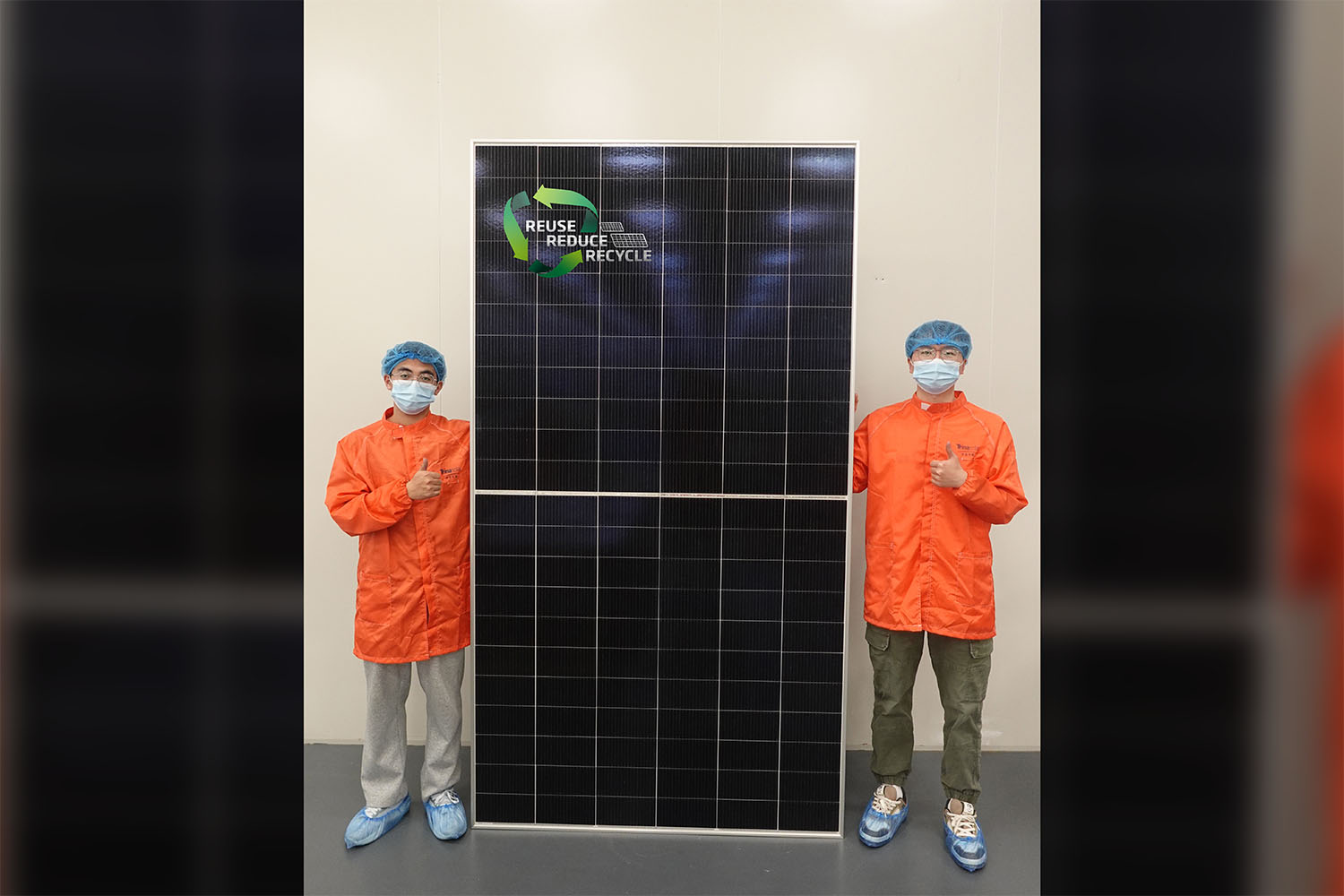The increase in photovoltaic systems in local housing estates is cause for hope for environmental journalists everywhere. These systems can be found on more and more roofs and balconies, as well as in front gardens. Being able to generate your own energy and use it to charge electric vehicles, for example, has become more accessible and affordable in recent years.
People are actively participating in the energy transition because, in addition to being a more sustainable option, generating their own energy means they are independent from energy suppliers. Because of this, it’s all the more important that, when we purchase solar cells, we consider how they’ll be recycled.
The Chinese solar giant Trinasolar has now become the first company to produce a new solar cell entirely from used solar panels. So is solar energy now becoming even more sustainable?
Recycling of glass, silicon, aluminium and silver
Trinasolar has produced a c-Si module from 100 percent recycled materials. Such modules use crystalline silicon as a semiconductor material. This is modified using additional chemicals so that it can emit or absorb electrons when exposed to light. Photovoltaic modules with crystalline silicon are the most common solar modules both in industry and in private households. Silicon is the second most common material in the earth’s outer layer, so sourcing and using it in photovoltaic systems isn’t destructive to the environment.
Trinasolar’s technology is groundbreaking. By using chemicals developed in-house, the company can break up the layer structures of the recycled solar panels. It is also possible to extract silver—Trinasolar recycles glass, silicon, aluminium and silver in its process.
Huge quantities of old solar cells become electronic waste
The worldwide e-waste from photovoltaic cells is expected to grow to 78 million metric tons by 2050. This is despite the fact that private individuals and companies can dispose of solar cells as conventional e-waste at recycling centres under the WEEE Directive. The resulting materials are then melted down, shredded and reused for glass wool or aluminium housings, for example.
AI to find new materials for solar cells
With efficiencies of around 20 percent, solar cells are already considered efficient—but the majority of the energy they produce is still lost.
Researchers at Forschungszentrum Jülich want to use a new type of AI system to find completely new materials to use in PV modules. Is ‘SOL-AI’ a revolution for the energy transition?
However, photovoltaic modules are too valuable to be treated as conventional electronic waste. In some cases, they also contain many environmentally harmful materials. Instead of shredding or melting down glass panels and aluminium frames, these components could be reused to build new modules. This would conserve resources and save emissions.
Silicon is available in large quantities as a raw material. However, it requires high temperatures and therefore a high energy input to extract the pure raw material from quartz sand. Because of this, it’s crucial to recycle intact solar panels so less new silicon must be extracted.
So has Trinasolar found the solution for greener solar cells?
Recycling solar cells is also a research topic in other countries. Researchers at the Fraunhofer Centre for Silicon Photovoltaics (CSP) in Halle an der Saale were able to produce a solar cell largely from recycled material as early as 2023. Its efficiency of 19.7 percent—the Trinasolar panel offers an efficiency of 20.7 percent—was only slightly below the performance of a module without the use of recycled materials.
However, Head of Research Andreas Obst emphasised to Spektrum that this study was deliberately a feasibility study. The life cycle assessment of recycling was therefore not taken into account. This could also be the literal crux of Trinasolar’s new process. If the life cycle assessment of the process is worse than the use of new materials, the recycling process is not suitable for industrial use.
<!–
window.CustomSubstackWidget = {
substackUrl: “https://digitalforgood.substack.com/”,
placeholder: “my email address”,
buttonText: “Subscribe”,
theme: “custom”,
colors: { primary: “#57B050”, input: “#000000”, email: “#FFFFFF”, text: “#000000”,
}
};
–>
Antoine Chalaux from ROSI, a French recycling company for solar cells, told RESET that this depends on the chemicals that are used. However, Trinasolar does not make clear whether they use environmentally harmful or environmentally friendly chemicals in their production. To achieve better recycling rates in the photovoltaic industry, the process would also have to be economically viable. “With ROSI, the recycled materials can keep up with the prices of new materials. This is by no means an easy endeavour.”
We do not yet know whether the recycling module from Trinasolar is economically viable. However, as Antoine Chalaux emphasises, the development of a modern and 100 percent recycled PV panel from a leading manufacturer is generally very good news.
The post A New Recycling Milestone? Trinasolar May Have the Solution for the Solar Cell Circular Economy appeared first on Digital for Good | RESET.ORG.


